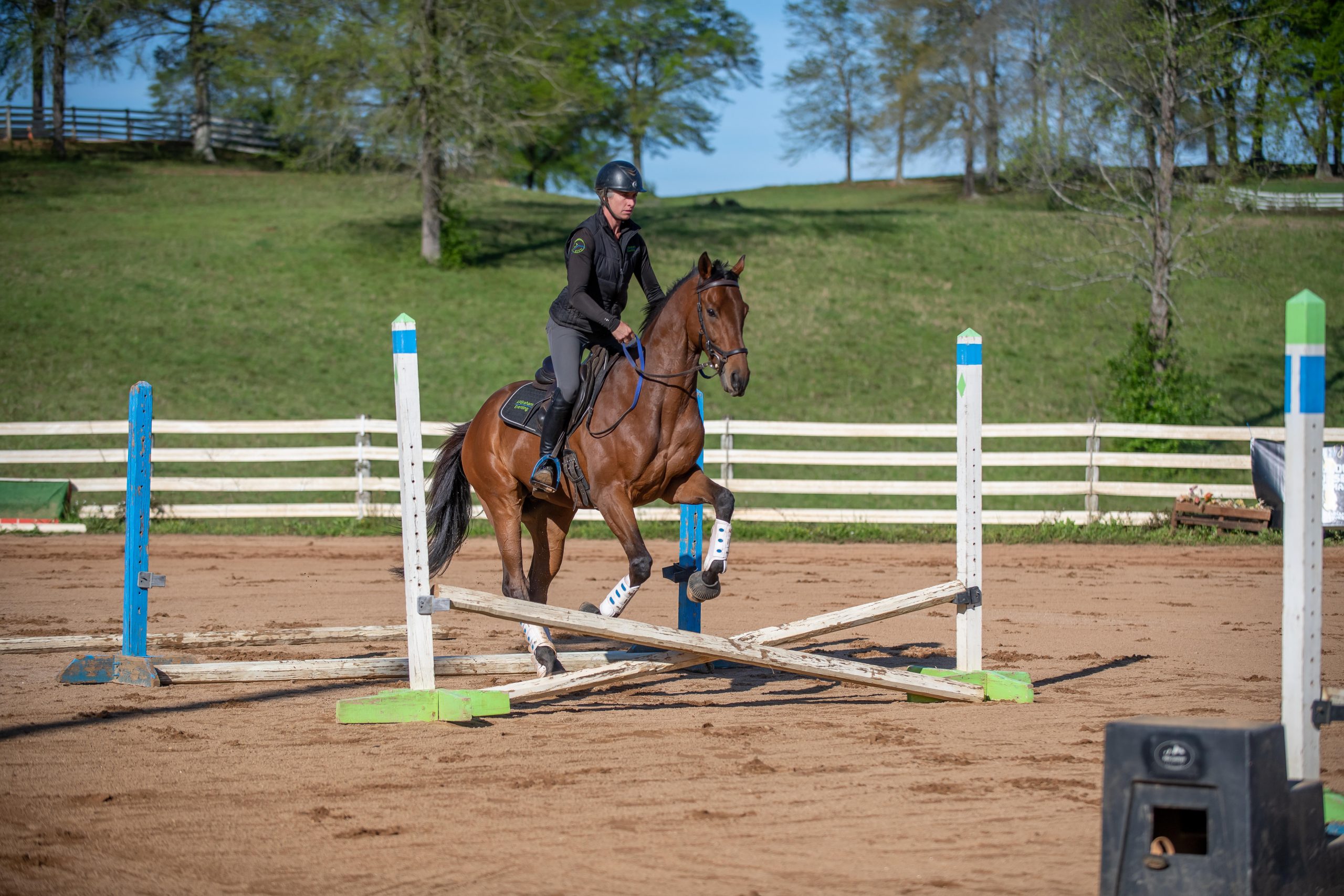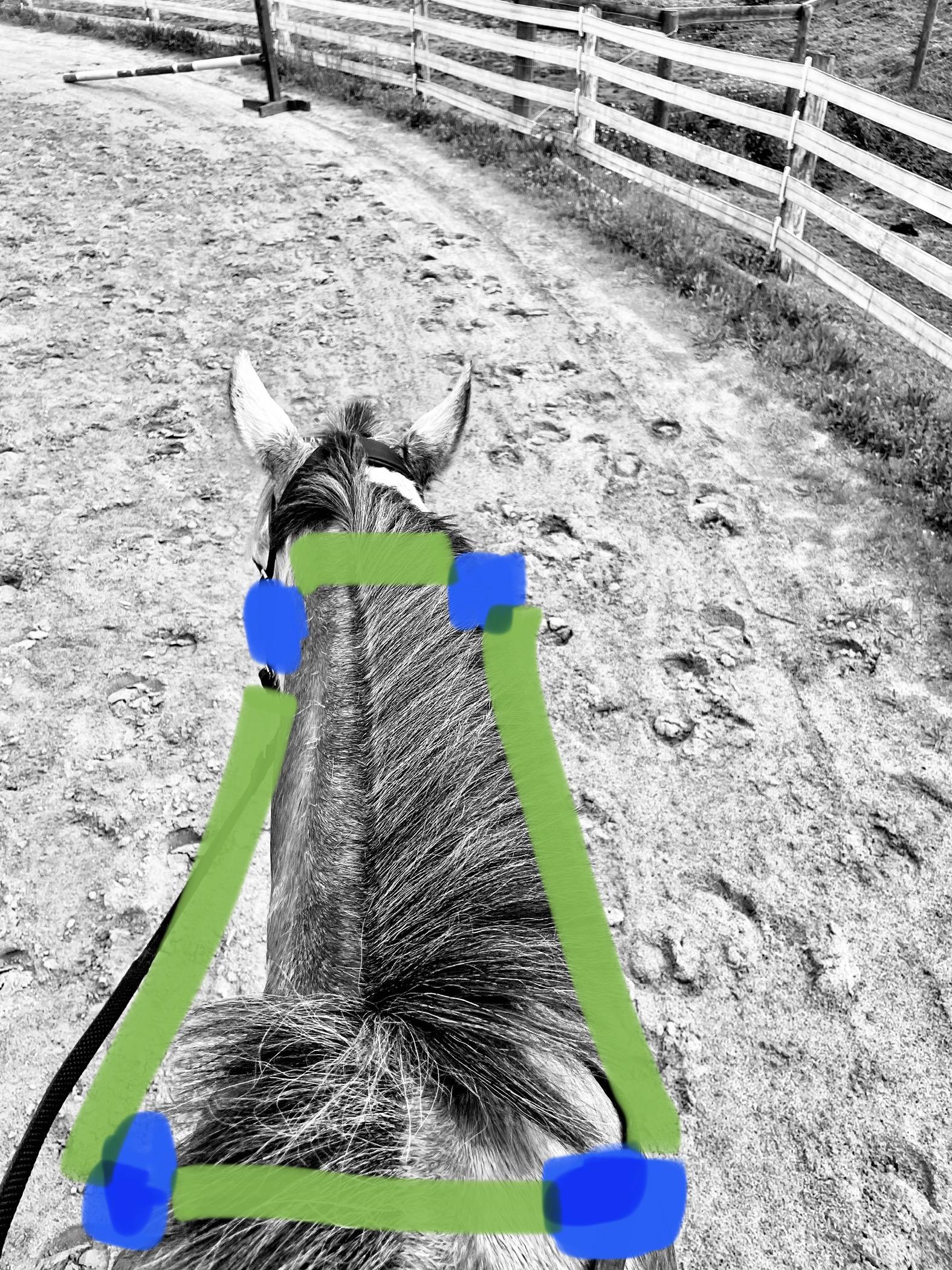
Thoroughbred Logic: Bungee Elbows for the Win
“No matter how fast your fingers are at opening and closing — holding and releasing tension — your elbows are nearly always faster and more fluid.”
Welcome to the next installment of Thoroughbred Logic. In this weekly series, Anthropologist and trainer Aubrey Graham, of Kivu Sport Horses, offers insight and training experience when it comes to working with Thoroughbreds (although much will apply to all breeds). This week, come along for the ride as Aubrey offers her logic on the importance of elbows when riding and training.
I have been sitting here deleting opening sentence after opening sentence. I just can’t figure out a pithy, interesting way to introduce the concept of the elbow. I mean, they are just a set of articulating joints, halfway down your arms. Frankly, they’re not that interesting… until you’re riding, and especially until you’re riding a “hot” or “sensitive” horse. Then elbows are the bee’s knees. Well… figuratively, not literally.
The difference between a decent training ride and a really good training ride is often found at exactly that boring arm articulation. Elbows help you to do many things, but for our purposes, they assist in two main ways: 1) stay bungee and connected and 2) establish a “box” for the shoulders.

Cryptorithm staying within the “box” at the last Thoroughbred Logic Clinic. Photo by Cora Williamson.
1) Connection:
When one rides, contact with the bit and thereby connection to the hind legs (because, yes, oddly this is how this works) is controlled through one’s hands. That said, our hands are just the last point of contact in a line of articulations: knuckles, wrists, elbows, and shoulders. To stay soft, all of those joints need to be relaxed and able to move; lock one, and all of them will struggle to stay fluid.
I have a student (who will likely laugh when she reads this) who used to lock her hands. She would make tight fists but still try to stay soft through the rest of her arms. We discovered that if I yelled, “do not kill the baby birds!” she was able to conceptualize the right feel for her knuckles and the death-grip would open enough for her horse to ride forward beautifully. The same is true of the shoulders, elbows, and wrists (or frankly any other joint in your body, but for now we’re just dealing with arms). Lock up and you lose all “feel” to the bit and hind end.

Cindy Adcock and Yukon Johnny rocking around at the last Thoroughbred Logic Clinic with lovely bent elbows and good soft connection. Photo by Cora Williamson.
This bungee-ness is critical. It is also surprisingly hard to do, takes a fair amount of core strength (to stay soft and stable so that you can be light) and muscle memory. Had I ever taken an anatomy class, I might be able to tell you why the elbow is perfectly designed to both hold tension and be able to flex and give far better than your fingers. Sure something has to do with bicep strength and general bone, muscle and ligament design of the joint. But the reality of the situation is, no matter how fast your fingers are at opening and closing — holding and releasing tension — your elbows are nearly always faster and more fluid.
Elbows become not only the shock absorbers that buffer between your body’s movement and the horse’s, but they are also able to multitask. When correctly operating in a straight line to the bit, they can buffer while also steadying, holding, giving, softening, creating bend, rewarding, or balancing a horse. Moreover, they can do all of this in time with the horse’s body. So when riders are constantly shortening their reins, it is often because they have released (which is good) through their fingers (which is not as good as doing so through the elbow) and the hold or “take” then requires them to reset their hands. Moral of the story: fingers slow, elbows fast.

Ellie, showing off her one month progress as she comes over her back and into her bend nicely. Photo by Alanah Giltmier.
So, when green Thoroughbreds (or any horse for that matter) are struggling to connect to their hind end — push from behind, and eventually “come over their back” to make the correctly-muscled powerful movement — it is often the bending and bungieness of the elbows that are a final piece of the puzzle. That piece allows riders to be light but strong and able to respond in time with the horse.
2) Guide the Shoulders:
Elbows are critical for one other thing (at least in terms of this article). They create the space in which the horse’s shoulders operate. With well-trained performance horses, it will only take the closing of a finger or the increased tension in an elbow to turn, half halt, or deepen their bend. With green horses, those movements and asks need to be made more obvious — magnified and spelled out for clarity sake — because, believe me, a confused Thoroughbred is rarely a perfectly behaved one.
I think about the space between a rider’s hands as creating some form of “box”:
In a way, that box holds the horse’s shoulders. And it is the bending of the elbows that helps to create that box and thereby maintain straight, or draw the shoulders deeper into the bend to help get the green horse on their outside hind leg (where power is created for most gaits).
So if you’re coming at a fence a horse might question (aka maybe their first cross-rail, or the giant right-sided corner on cross-country), by bending the elbows and widening the hands, the box becomes bigger, more obvious. Staying straight between your hands and legs now contains and holds the shoulders. But if the elbows don’t bend, that box pulls down on the bars of the mouth and will usually induce a llama-like stance of inversion. Always better to bend.

Wolf (Louisiana Moon) needing a wide box and bungee elbows to help guide him through the grid. Photo by Cora Williamson.
The bent, bungee elbows make the box that encourages straightness, but it also helps green horses learn to come round by being able to draw the shoulders deeper into a bend. On a circle, while sitting tall with inside leg on, by bending and gently drawing the outside elbow wide, a horse will naturally let their shoulders fill the space in that “box.” Moving the shoulders encourages them to rely on their outside hind leg in the turn and “sit.”

Me looking ridiculous but doing my best to explain how elbows bend and get a horse on the outside hind (in this case, right) leg. I never have any idea if these demos are helpful, but I inevitably end up doing them all the time anyway. Photo by Cora Williamson.
I cantered around on a green filly yesterday explaining this to my working student. I would close my hands together (maybe four inches apart and the mare would wiggle off the line of the circle and invert, draw my right rein out through my elbow and she would engage her core, move her shoulder over and begin a round bouncy canter. It is so simple it shouldn’t work, but then again, the best things often don’t need to be terrifically complicated.

Ellie showing off her ability to maintain the bend on the circle and push from behind. Photo by Alanah Giltmier.
Moral of this long and somewhat unexciting story is to simply bend the elbows and keep them bungee. Yeah, yeah, this is far easier said than done. But the great thing with this is that the results of bent, flexy elbows is not just a more connected, rounder horse. Rather it is a the start of a positive feedback loop where the rider provides constant soft, clear direction to the horse, the horse will try to do what is asked, and the rider becomes stronger and more confident because they get the “right answer.” The stronger and more confident the rider (while still being bungee, of course), the more confident and relaxed the horse becomes. And all that just because someone bent their elbows.
Go ride folks, but keep it bungee.







